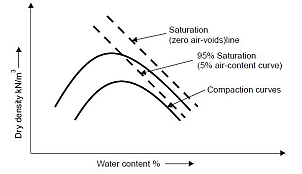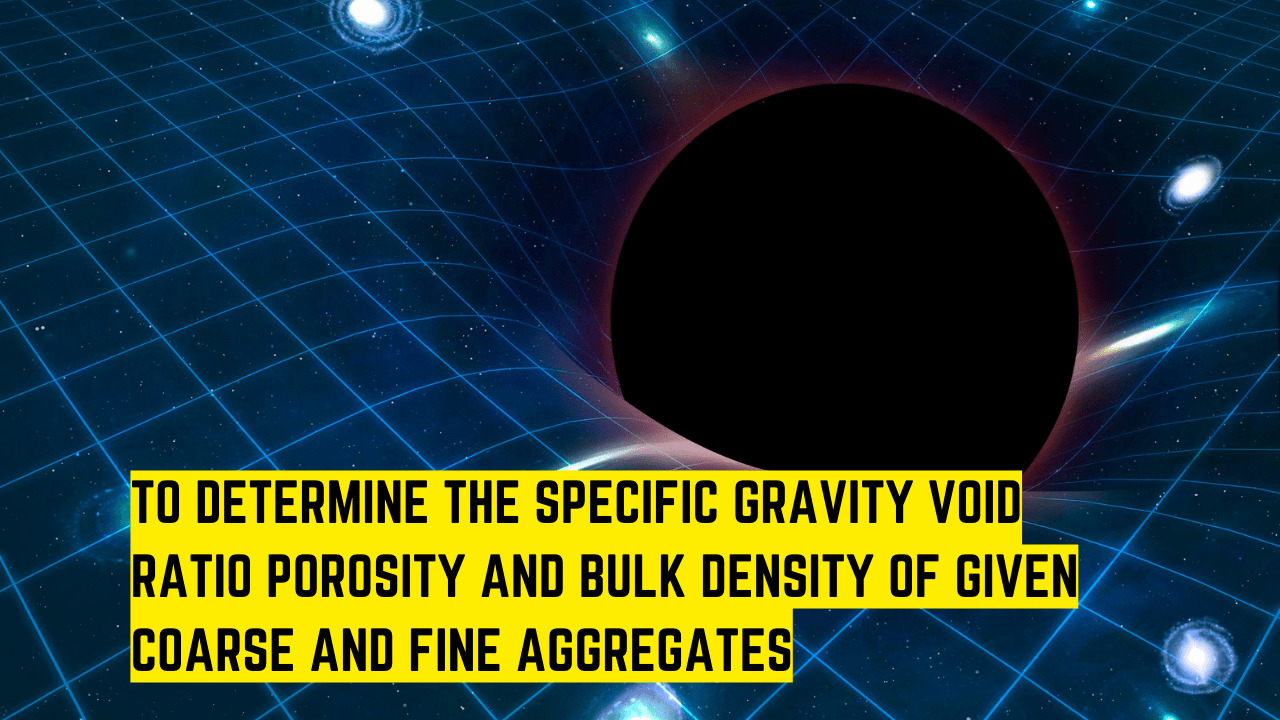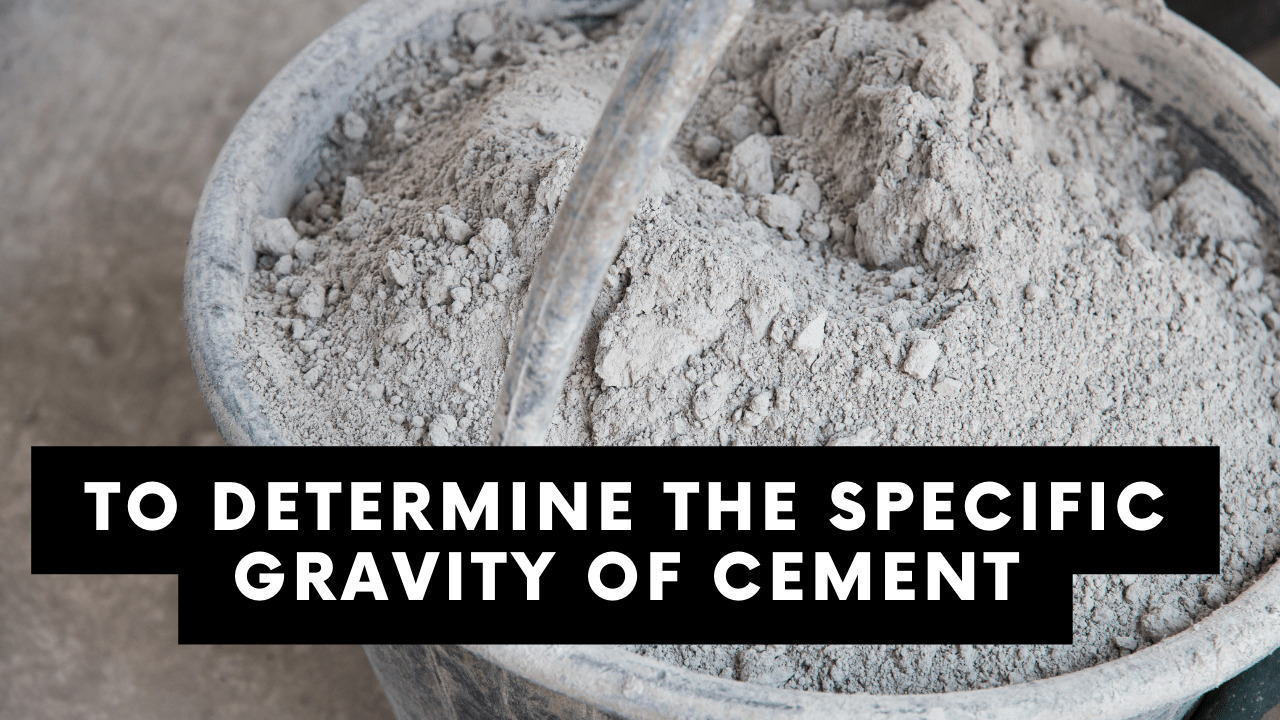Table of Contents
Standard Followed
ASTM C 698 or AASHTO T-99
Objective
The performance of standard proctor test targets the following objectives,
- To investigate the moisture-density relationship of a soil
- To determine the compaction characteristics of soil under variable moisture content
- To determine the optimum moisture content that will result in the maximum soil unit weight when compacted with a particular effort
Related Theory
Compaction:
Compaction of soil is a mechanical process of ground improvement that involves densifying the soil by reducing the volume of air in the soil mass through an external compactive effort. It can be achieved by vibrations, rolling, or tamping.
Water proves crucial for compaction of a soil mass. This is owing to the fact that when water is added to a soil mass, it behaves as a softening agent and aids in bringing together the soil particles when subjected to an external compactive effort.
However, corresponding to a certain compactive effort, there is a particular quantity of water that can result in maximum densification of soil. This moisture content is termed as the optimum moisture content and the corresponding unit weight of soil is called its maximum dry density.
Beyond the optimum moisture content, any further water addition tends to reduce the soil unit weight. This is because the water molecules start occupying the spaces otherwise occupied by soil particles. Therefore, for practical reasons, the determination of the optimum water content to be added for maximum soil densification corresponding to a fixed compactive effort is of paramount importance.
In the figure given above, it can be seen that as the water content increases, the soil unit weight also increases proportionally. However, after a particular moisture content (traced as w2 in the figure), any further water addition tends to dwindle the soil unit weight or density.
Significance of Compaction
- Compaction enhances the soil’s engineering properties pertinent to load-bearing.
- It reduces the probability of soil settlement, which can prove ruinous if any structure is constructed over the soil.
- It increases the stability of the slopes of embankments.
- It augments the shear strength of soil by enhancing its frictional properties.
- It lessens the permeability of soil.
Standard Proctor Test
In-situ soil compaction is measured in terms of relative compactive, which can mathematically be expressed as
Where the numerator defines the field density that can be determined by core cutter or sand replacement techniques, and the denominator shows that maximum laboratory density that can be determined by Standard or Modified compaction tests or vibrating table tests.
The Standard Proctor Test is a laboratory test that helps in determining the maximum dry density of soil. This test was proposed by Proctor in 1933, who pointed that there exists some relationship between the soil moisture content and its dry density when it is subjected to some compactive effort. For a particular compaction energy, this moisture-density relationship (also called ‘compaction curve’) is graphically shown below:
The ordinate of the compaction curve, i.e., the dry density of soil can be mathematically calculated as:
Effect of Compactive Effort on Compaction Characteristics
It is found experimentally that for a particular soil, increasing the compactive effort decreases the optimum moisture content requisite for attaining the maximum dry density. Additionally, subsequent hikes in compactive effort also increase the corresponding dry unit weight of the soil.
For laboratory experiments, increasing compactive effort entails an increase in the number of blows of the hammer, whereas, in the field, the increase in compactive effort is accomplished by increasing the number of passes or reducing the lift depth of compaction equipment.
Zero Air-Void Line (Saturation Lines)
A relationship between the moisture content and dry density for a particular degree of saturation of soil can be established using the following formula:
In the above equation, if we substitute S = 100%, a zero air-void line is obtained which is wholly theoretical. This is because it is practically out of the question to expel the pore air completely by the compactive effort. However, these saturation lines (for S = 90%, 95%, etc.) can be superimposed on the compaction curves and aid in determining the air voids present at different points on the curves.
Apparatus
- Mold assembly, comprising a cylindrical metal mold with a base plate and an extension collar assembly
- Rammer, having a diameter of 2 inches and weighing 2.5 kg, either manually or mechanically operated, with a fall height of 12 inches. The rammer simulates the field compactive effort that is achieved by some compaction equipment.
- Weighing balance, to measure soil weights
- Thermostatically-controlled oven, for drying the soil sample/s
- Empty soil cans and trays
- Sieve #4
- Graduated cylinder, for adding a measured quantity of water in the soil mass
- Straight edge, to level the mold containing soil
- Mixing tools (spoon, trowel, spatula, etc.), for thoroughly mixing a predefined water quantity with the soil
Test Specifications
- The soil is filled in 3 layers.
- Each layer is given 25 blows of the compaction hammer or rammer if the mold diameter is 4 inches and 56 blows if the mold diameter is 6 inches.
- The drop height of the hammer is 300mm or 12 inches.
- The compaction energy in case of the Standard Proctor Test is 12,375 foot-pounds per cubic foot.
Test Procedure
- Take an ample quantity of a soil sample representative of the source soil and air dry the soil till the material becomes friable.
- Using a rubber mallet, pulverize the soil lumps in the mass, if any.
- Sieve the soil through #4 sieve and discard the coarser material.
- Take approximately 3kg of the air-dried and pulverized soil sample. Add water to the sample keeping the moisture content almost 5% below the anticipated optimum moisture content of the soil. Mix the water and soil thoroughly.
- Clean the mold and measure its dimensions (height and diameter) and weigh the empty mold on the weighing balance without the collar.
- Place the mold on the base plate and fix the collar. Start adding soil in the mold in three layers whilst compacting each layer with 25 or 56 blows of the rammer depending on the mold diameter.
- Remove the collar and trim the protruded soil part using a straight edge to level the mold top. Weigh the soil in the mold.
- Take some soil (about 100 g) from the mold in a can and oven-dry the soil sample for determining the exact water content.
- Remove the soil from the mold and break it till no lumps remain.
- Add some additional water into the soil mass to further elevate the moisture content and repeat the above procedure.
- Keep adding water till the moisture content exceeds the optimum water content, thereby reducing the soil unit weight.
- For each increment of water content, measure the moisture content by taking a small sample for oven-drying.
Observations and Calculations
Volume of the mold = V = cm3
Specific Gravity of soil = Gs =
| Sr. # | W1 | W2 | WT | Bulk Density,
ρb = WT/V |
Wc | W3 | Ws | Moisture Content
w |
Dry Density
ρd = ρb /(1+w) |
| (g) | (g) | (g) | (g/cm3) | (g) | (g) | (g) | % | (g/cm3) | |
| 1. | |||||||||
| 2. | |||||||||
| 3. | |||||||||
| 4. | |||||||||
| 5. | |||||||||
| 6. |
Notations Used:
W1 = Weight of empty mold
W2 = Weight of soil + mold
WT = Weight of soil in the mold
Wc = Weight of empty can
W3 = Weight of can + wet soil
Ws = Weight of can + dry soil
Graph
Plot a compaction curve, taking the moisture content as abscissa and the dry unit weight of soil as ordinate.
In order to plot the saturation lines, calculate ρd for different degrees of saturation (S). This can be done using the following equation:
Where γw is the unit weight of water, Gs is the specific gravity of soil solids, and w is the moisture content already determined from the compaction test.
This saturation line/s can be superimposed on the already-plotted compaction curve.
Results
From the graph;
- Maximum dry density of soil = ρdmax =
- Optimum moisture content (%) =
The criteria for evaluating the acceptability of the test results are provided by the standard. These estimated ranges vary with the soil type.
Source: ASTM D 698
Test Precautions
- Soils that have undergone the compaction test previously must not be used again for the same.
- Avoid taking a soil sample that contains particles subject to degradation during the compaction test.
- The compaction blows must be provided evenly over each soil layer, ensuring that the hammer has risen to the requisite free-fall depth.
Discussion
The maximum dry density of soil achieved from the compaction curve also hinges on the gradation of the soil. For the same soil type and compactive effort, a well-graded sample is likely to achieve a higher value of dry unit weight than a poorly-graded or uniformly graded soil sample.
Standard Proctor Test is employed for structures that have to bear relatively less loads e.g., footpaths, residential buildings, etc. However, for megastructures, the Modified Proctor Test is made a preference owing to the supplementary compactive effort that serves the cause aptly.
















